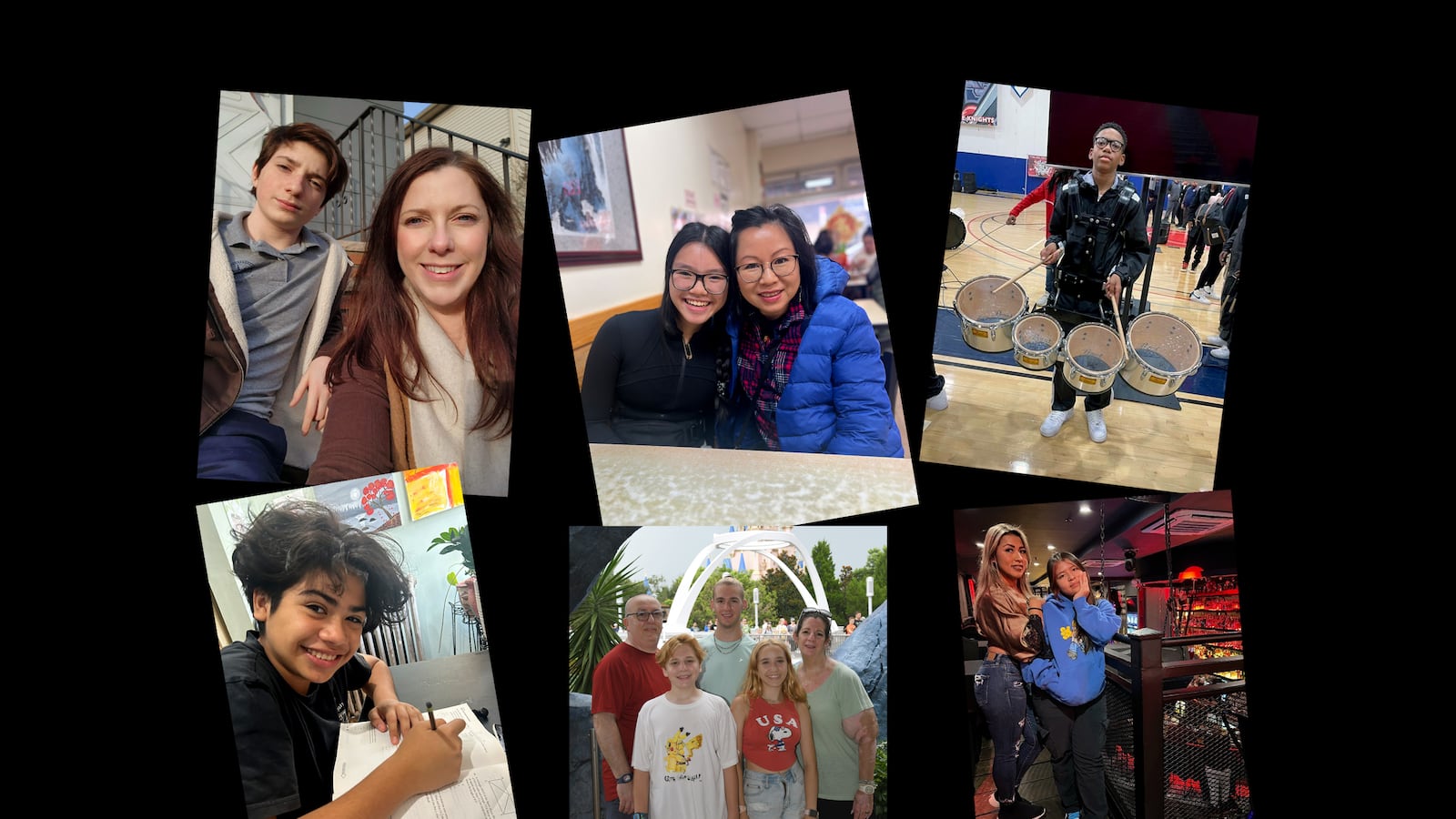Sign up for Chalkbeat New York’s free daily newsletter to keep up with NYC’s public schools.
One mom called it hell. Another felt like she was drowning in information. Some stretched their budgets to pay for test prep and coaches for their children’s art portfolios and auditions.
Welcome to New York City’s high school application process, where parents — often moms — take on what amounts to part-time jobs to help their 13-year-olds find the “right” school.
Families have until Friday to rank their 12 choices from among 700 programs in 400 schools. Despite the vast array of options, families feel like they’re fighting for seats.
In many ways, they are. In talking to more than a dozen families of eighth graders about their admissions journeys, Chalkbeat found a handful of coveted schools repeatedly came up. And admissions data confirms that a small number of high schools are ranked on an outsized number of applications.
The top 15 schools represented about 20% of all the choices that eighth graders picked on their applications in 2021, according to an analysis by Sean Corcoran, associate professor of public policy and education at Vanderbilt University.
And this data doesn’t include the eight prestigious specialized high schools, like Stuyvesant and Brooklyn Tech, that require the Specialized High School Admissions Test, or SHSAT, or LaGuardia High School of Music & Art and Performing Arts, which requires auditions. Thousands of students apply to those schools through a separate process.
“When people are confronted with an overwhelming amount of information, they want to simplify things as much as possible. You start with the schools that everybody knows, with the best reputation,” said Corcoran, whose research focuses on how to provide information to families to help them expand their choices.
The odds can feel overwhelming. At Manhattan’s Eleanor Roosevelt, there were 37 applicants for every general education seat, according to stats from the MySchools directory. There were 27 applicants per seat at Bard Early College High School in Queens. (This school was the 18th on the popular schools list.)
As with so many things in the public school system, those with time and means often have an advantage, contributing to New York having among the most segregated schools in the nation. Families jockey for limited spots on tours. They go down rabbit holes in Facebook groups to figure out their children’s odds. And a whole cottage industry has developed around the process, including consultants advising on a good fit.
Below are stories from six families from across the city reflecting on the lengths they’ve gone to figure out their school rankings.
“It’s just like the college application process,” said southeast Queens mom Trina Mitchell. “But it’s high school! It’s insane.”
The experienced project manager
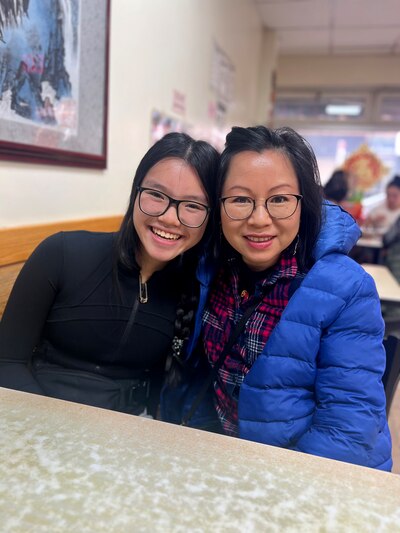
Karen Li is hedging her bets.
The day after Li’s daughter Carina finished seventh grade, Li enrolled her in an SHSAT prep course. Carina studied all summer and took the prep course until Nov. 8, when the Education Department administered the test in public middle schools across the city.
Carina also took the Test for Admissions into Catholic School, or TACHS, and will sit for Catholic school scholarship exams on Saturday.
Then there’s the application for LaGuardia High School. Carina started planning her visual art portfolio in July and was still working on it four months later. She needed to submit eight pieces (including a still life that she redid three times) and make a video explaining her choices.
Even with help from an artistic aunt, the process is a lot. In fact, it’s all a lot.
Studying for the SHSAT was “terrible,” and the practice tests were “horrible,” said Carina, who lives in Dyker Heights, Brooklyn. The art portfolio was “very demanding.”
“People always think that you have to spend money to pay for SHSAT prep,” said Li, who works in tax reporting. She now realizes that many kids vying for arts schools have to work just as hard as those studying for the SHSAT, plus they’ve been taking pricey arts classes for years. “They dance when they’re in diapers.”
Li said she has felt like her daughter’s “project manager,” reminding her to study, keeping track of due dates, and obtaining transcripts and recommendation letters for Catholic schools.
She has had practice: She went through the high school application process a few years ago with her older daughter, who went to Brooklyn Tech. So Li knew she had to start researching high schools for her younger daughter in seventh grade.
Carina, a competitive swimmer, would also like to go to Brooklyn Tech, especially for its swim team. But the family isn’t pinning its hopes on one school.
On top of it all, Li sees her daughter feeling overwhelmed and tries not to add stress.
“All this will be over by Dec. 2,” Li said.
The community activist
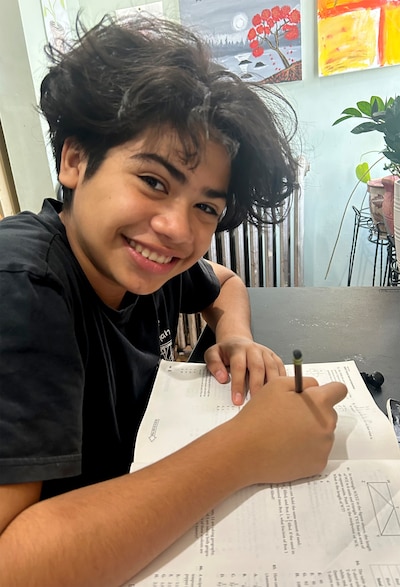
Expensive SHSAT courses were out of reach for the Sosa family of Sunset Park, Brooklyn. But they still managed to find creative ways to get their son Jason test prep.
Jovita Sosa recently got a grant that helped fund a six-week summer SHSAT test prep course through the literacy-focused nonprofit she started 10 years ago, Grupo Juego y Lectura. Jason was one of roughly six students who met twice a week for the course.
The Sosa family also received study materials from an acquaintance who got into Stuyvesant after completing the city’s DREAM program, offering free test prep. Sosa was amazed at how much more detailed the study materials were than the free materials the Education Department offers.
“I can’t afford the prep that some other people are getting,” said Sosa, a paraprofessional.
Jason, who attends a Catholic school, had been studying independently about 20 minutes a day this fall using the DREAM workbook. He worked with a high school senior on math for an hour every Saturday and Sunday. He also signed up for a free TACHS test prep program through his school. Though Sosa said she can no longer afford to pay for Catholic school, Jason wanted to take the test in case he got a scholarship.
“I found the SHSAT as expected, challenging, but not out of my grasp,” Jason said. “I feel like I could’ve done a better job with taking more time to understand the questions, but being under pressure blurs your thinking.”
The experience brought out the activist in Sosa.
She wrote to her state senator who had boasted in a constituent email of securing millions of dollars for SHSAT prep, asking for help to make free DREAM workbooks widely available to children who can’t afford test prep.
Sosa is trying to remain grounded.
“I lived it with my oldest child. We stressed him out when he was younger,” she said. “You learn it’s not the end all.”
One family. Two kids. Many art programs.

“It’s hell.”
That’s how Upper East Side mom Caren Doucette describes the application process for her twins.
Lexie — who has ADHD and dyslexia — is looking at visual arts. Zach is interested in performing arts. While there’s some overlap between their schools of interest, Doucette estimates that she devotes at least two hours daily to the process (and more on weekends). She’s researching websites, comparing notes with other parents, sending questions to schools, and attending tours.
“If you don’t sign up in the first 24 hours, you miss a spot,” said Doucette, a tutor with a flexible schedule. “My days are spent on the computer scouring all of this, and my husband will take the kids on evening tours.”
Doucette is especially concerned about whether her daughter, who has specific learning needs, will land at a school that can support her.
Lexie bonded with her visual arts coach, who also has dyslexia. Zach, who enjoys musical theater, had a drama coach and a voice coach, who each charge about $150 an hour. He also completed a free bootcamp in August through the Education Department’s Summer Arts Institute, where he studied with an acting coach.
“It’s a financial commitment,” Doucette said. “It straps us, but we can figure it out.”
Lexie is in “priority group 3,” because of a low grade she got last year in math from an unsupportive teacher, according to her mom, who has complained to their middle school, Wagner. Zach is in “priority group 1,” but didn’t have a high lottery number — a reality she wanted to shield him from.
Lexie and Zach went on all of the school tours as well. Even though it can be hard for her 13-year-olds to focus during the tours, they “get a vibe” being in the schools, Doucette said.
But that means they’ve missed about five days of eighth grade so far. One week they had five tours in three days, and now they’re wrapping up auditions and interviews and writing essays.
“It’s really annoying and unnecessary and stressful and time-consuming and set up awfully,” said Zach. “We have multiple things that cut into our school hours.” He wasn’t excited about the 7 p.m. open houses either.
“It’s annoying,” Lexie agreed.
A mother and daughter navigate language barriers
When Nancy Sagbay enrolled her daughter Jaleen in kindergarten nine years ago, her main priority felt clear.
Sagbay, who emigrated from Ecuador before Jaleen was born, didn’t want her daughter to lose her native tongue. So Jaleen attended P.S./I.S. 218, a dual-language K-8 school near their home in the Highbridge neighborhood of the Bronx.
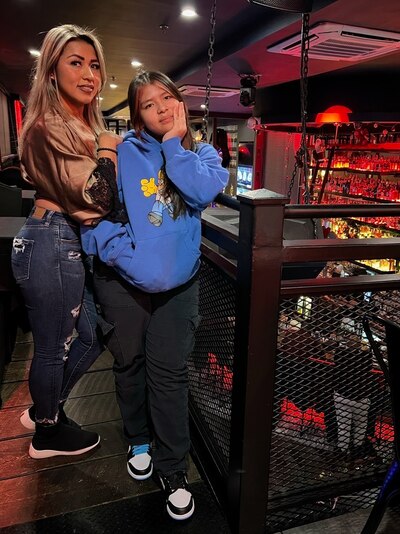
Now Jaleen can read, write, and speak in Spanish and English, and averaged above a 90% in her classes last year, to Sagbay’s great pride.
But as Jaleen turns her sights towards high school, the choices — and the application process — feel a lot more complicated.
“No one is ready for so much information,” said Sagbay, who still struggles with English.
Sagbay works at a barbershop and is constantly asking colleagues and clients for school recommendations and advice, which she relays to her daughter, Jaleen said.
As Jaleen finalized her list, she crossed off some she’d initially been eyeing once she saw their four-year graduation rates on MySchools. The 13-year-old hasn’t been on any school visits, and three of the schools she’s considering — Columbia Secondary, her top choice, Bard High School Early College in Manhattan, and Beacon, which one of her teachers recommended — require essays and other prompts.
With just a week left before the due date, Jaleen still hadn’t started them and was getting “stressed and anxious,” she said. But teachers at her middle school gave her time during the school day this week to work on them.
“I feel like I could do it,” Jaleen said of the selective schools. “I like competition. If there’s competition for it, it must be a good school.”
Sagbay, however, is worried about commuting to Manhattan.
“I didn’t want it because the trains can be dangerous,” she said, “but she wants to explore, to see people outside (her neighborhood).”
For now, they’re compromising: Jaleen is including some schools closer to home on her list.
They’re also compromising on academic focus. Jaleen is interested in art, but her mom has encouraged her to consider schools with a technology focus, since Jaleen is strong in math.
“One way or another,” Jaleen said, “she would … put that pressure on me to do better.”
The fierce parent advocate
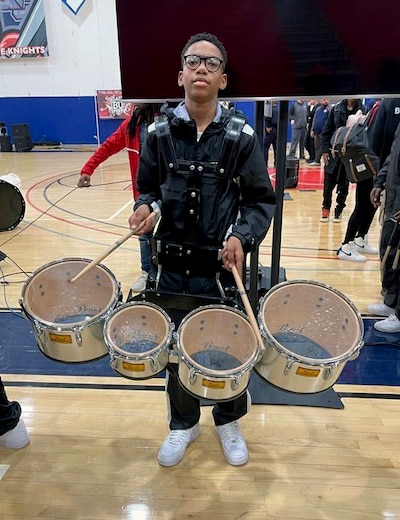
What if a child’s performance in seventh grade did not reflect their abilities because of a series of extenuating circumstances?
Trina Mitchell demanded answers to that question on behalf of her son Justin.
Despite other public schools reopening after COVID shutdowns, Justin’s charter school in St. Albans, Queens, remained remote during his sixth grade year because of a problem with its roof, Mitchell said. Upon returning in seventh grade, his school lacked sufficient staffing to provide services mandated by his Individualized Education Program.
Mitchell’s letter to the Education Department through MySchools explaining the situation went unanswered until she brought it up again at an October high school admissions forum for families of children with disabilities.
The department agreed to rank Justin based on his GPA from the first semester of eighth grade.
“I didn’t give up,” said Mitchell, who works as a court clerk in Queens.
She was not able to prevail, however, in her quest to get a hard copy of the high school directory. She wanted it to mark up with sticky notes and carry around with her on tours for note-taking, “like a little bible.” She hoped it would help her discover new options.
The Education Department no longer prints hard copies.
Mitchell wished that things were easier, and that her son could just go to a zoned high school, but District 29 no longer has one. Nearby, the campus that housed Andrew Jackson High School — her husband’s alma mater — has been carved up into several small schools.
These schools read like a “country club” to Mitchell, boasting of tennis courts, football and soccer fields, and a track. Digging deeper, Mitchell said she found most students aren’t on grade level.
In general, she was concerned about the overcrowding of many Queens high schools and also was perplexed by all of the specialty programs, like law and STEM. Her son does well in science and is a good writer, but doesn’t have a career path in mind. He’s interested in being on the drumline and football team.
“For your average kid that doesn’t have a clue what they want in life, how do they lock into a program at 12 or 13 years old?” Mitchell asked. “The system is designed to cater to a kid who has it together and knows what they want to do.”
To stay or leave Staten Island?
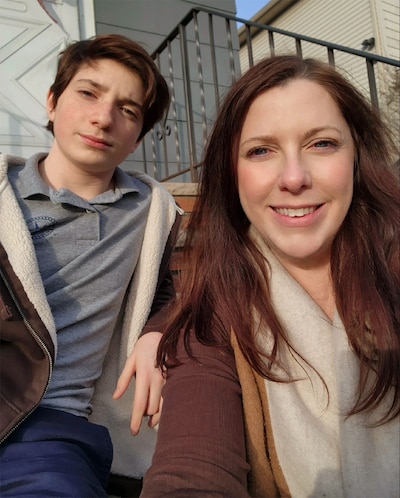
In drawing up their list of high schools to rank, Staten Island mom Lucia Curatolo-Boylan and her son Miles have been studying MTA schedules. By ferry or bus, he would commute more than an hour each way if he chooses a high school outside the borough.
Miles, the oldest of four, expressed an early interest in Staten Island Technical High School, a specialized school. But they’re casting a wider net.
They’ve toured schools across the city, including some Miles wasn’t thrilled about. They’ve considered Catholic high schools, too.
His deep love for illustration and drawing cartoons, as well as his interest in engineering, have helped inform the search.
But with some of his choices comes added stress — the anxiety over competition for coveted spots, the pressure of standardized tests and portfolios, as well as the reality of a long commute.
Curatolo-Boylan said she and her husband consider themselves lower-middle class, but still invested in getting Miles a tutor shortly before the SHSAT and TACHS, as well as paying for a few classes to help him strengthen his art portfolio. The standardized tests aren’t something that kids learn to tackle organically in school, she added.
“That’s a really difficult thing to stomach,” said Curatolo-Boylan, a private music teacher and acting and vocal coach who is also president of her local Community Education Council. “Knowing that there are kids that could really use that leg up in our community, especially here in Staten Island, and they’re never going to be able to afford that.”
Curatolo-Boylan said getting into public school here has always been stressful, but the “constant run-around of open house after open house” has been particularly grueling.
“So much of his life would change if he chose the city,” she said, referring to Manhattan.
With such a long commute, she knows he’ll leave early in the morning and return late in the evening. In a sense, this would mean letting go of him earlier than she anticipated, she said.
“It would be so exciting for him, and I would be so excited for him,” she said. “But at the same time, I think my heart might break a little.”
Amy Zimmer is the bureau chief for Chalkbeat New York. Contact Amy at azimmer@chalkbeat.org.
Julian Shen-Berro is a reporter covering New York City. Contact him at jshen-berro@chalkbeat.org.
Michael Elsen-Rooney is a reporter for Chalkbeat New York. Contact Michael at melsen-rooney@chalkbeat.org.


